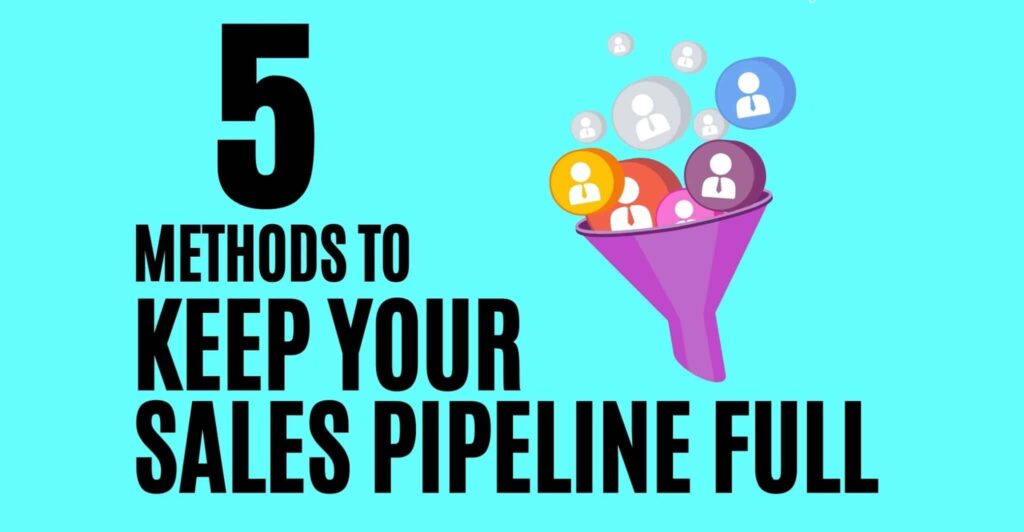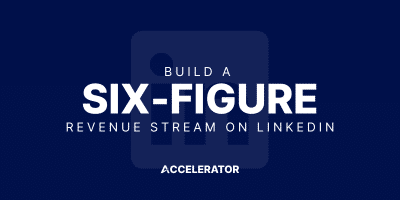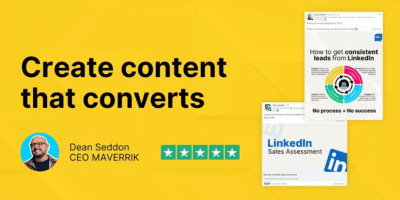The challenge to keep your sales pipeline full can feel near impossible. Especially with rising quotas and decreasing potential sales. It can leave you questioning how you’re supposed to keep hitting your targets? But it doesn’t need to be an overly complicated process. With our help and 5 methods to keep your sales pipeline full, you can be confident that you’ll start to see results.
But what is a sales pipeline?
A sales pipeline is a visual representation of all the stages of your sales process, from your first interaction with a lead or a contact all the way to capturing that sale. At a glance, it shows your selling performance, which allows you to easily see which activities and strategies are working and which ones aren’t.
Sadly, there isn’t one particular process that suits all. Instead, it varies from business to business and will be a case of trial and error to see which pipeline creation is going to yield the best results for you.
This lack of standardisation can prove problematic and cause risks. Like the difficulty presented when it comes to identifying specific areas to improve, the less accurate sales outcomes and the increase in beneficial leads becoming stuck in the “dead zone”.
This is why those that opt to continually create, maintain and improve their pipelines are far more likely to stand out and ultimately succeed.
- Prospects
One of the most important stages and tools you need to master is the art of continually prospecting. This means looking for new leads on LinkedIn, buying triggers and spotting patterns in the news. Then reaching out to them.
You’re only a DM, email or phone call away from a new prospect.
You just need to ensure that you’re dedicating the time needed to this. Blocking an hour out of your day once a week and building that habit to dedicate to this can create a consistent pattern. This means you’re able to stay up to date as you search for new potential prospects.
- Upsell
Upselling to your existing customers is another crucial element because when the trust and belief in your product has already been established it makes things far easier for you.
They have likely already purchased and will be keen to do so again, so be sure to take the time to regularly check on your existing customers. You want to continue to provide them with valuable opportunities and incentives so you can upsell to them.
- Social selling
Competing in today’s modern business world isn’t easy and without the right tools and resources to dedicate to social selling, you could find your company suffering as a result. That’s why you need to incorporate this into your business as soon as possible, to be able to grow your pipeline, increase your profitability and elevate your team’s skillset.
You need to identify the gaps and opportunities then target your prospects. It’s about planning, engagement and knowing how to use your social media channels to your advantage. You want to connect with prospects, develop a connection with them and engage with those potential leads – crack that and you’re onto a winner!
- Referrals
There’s no better advocate than your current customers. They already believe in you and your business, making them the perfect person to ask to refer other potential customers.
It can be useful to find out who they are connected to using the power of social media, then you can ask for strategic referrals using tools like LinkedIn. This lets you determine who they’re connected to and it means you can ask for a precise referral.
This way, you can enter accounts of your choice, not just the choice of the customer.
- Knowing your customer
No one will know your customer base quite like your team and as time progresses you’ll start to notice patterns. The industries you keep gravitating towards will more than likely win you deals. Meaning you can focus on account retention.
Account retention is the building of those relationships with your customers and looks at maximising your revenue. However, it’s important to remember that this isn’t a one-sided relationship.
It’s only as valuable as you make it.
Some strategies can include improving customer support, offering discounted renewal rates, and rolling out multi-channel engagement campaigns for existing clients. Ultimately, you want to ensure that your customers have a great experience, one that leaves them satisfied and wanting to return.
To conclude…
Combining these five methods can help you get well on your way to creating and maintaining a successful sales pipeline. It just takes a little care and nurturing to properly plot your pipeline in a customer-centric manner, and this is a process that could require a lot of trial and error.
The result will of course always be worth it though but above all keep prospecting because it’s crucial in building your pipeline.






